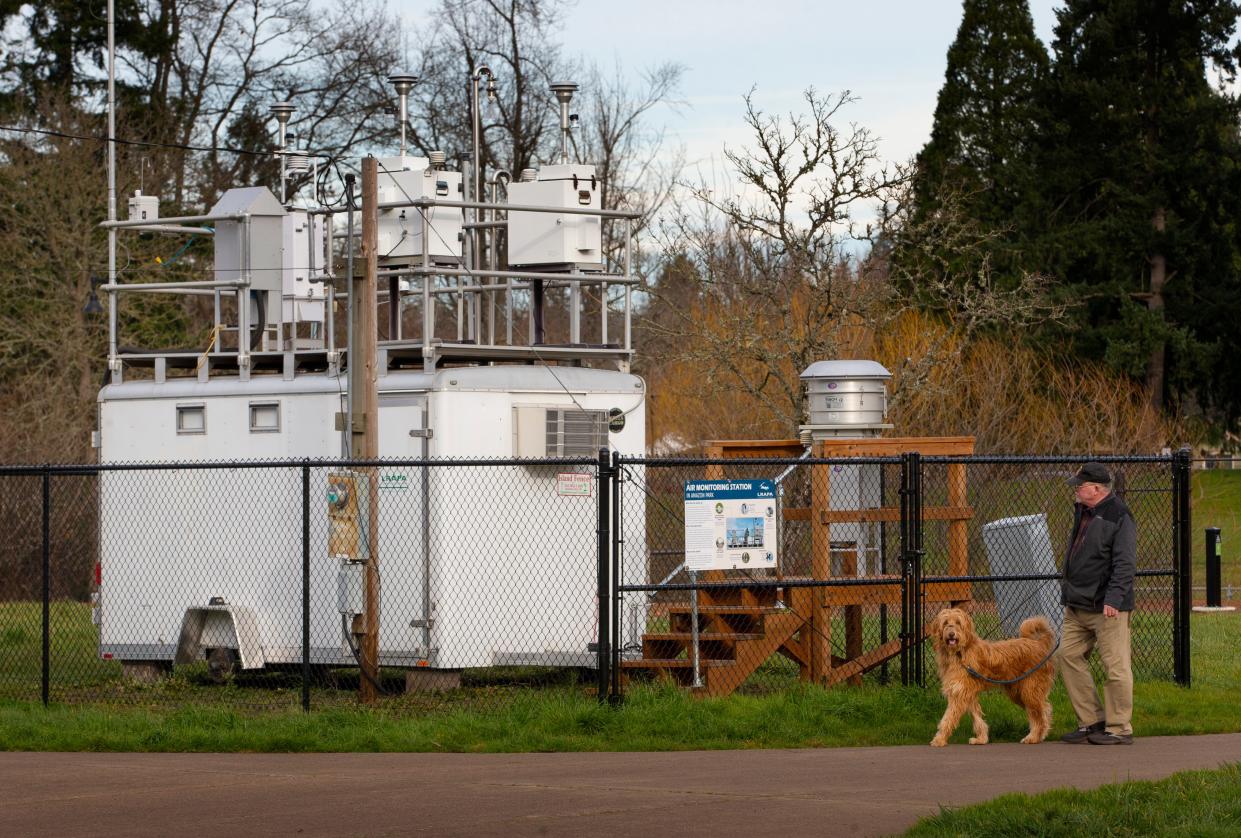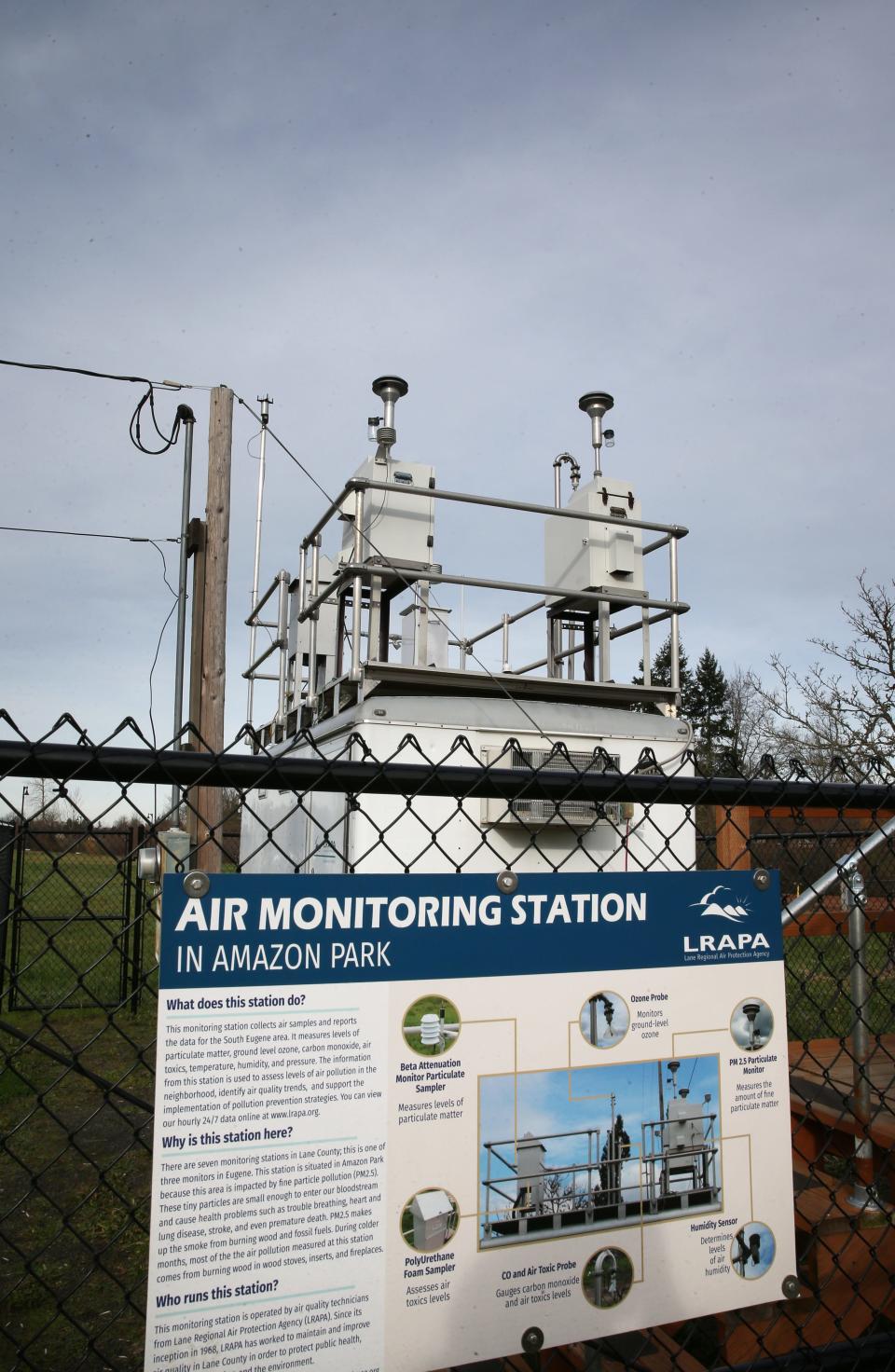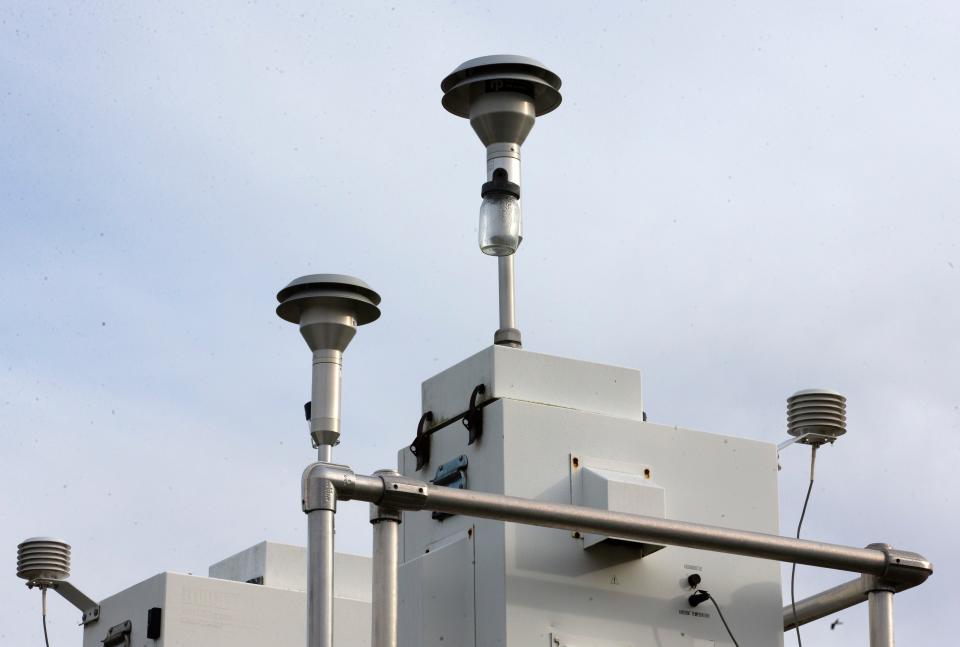How Lane County knows when the air is bad for your health

If Lane County is having a bad air day, at least one of eight machines will know about it.
The Lane Regional Air Protection Agency, the only local air quality agency in the state, is constantly deciphering the output of eight monitors to determine when investigations and warnings are needed. Those monitors help keep the county's air within federal standards by tracking common pollutants and, in some cases, toxins that aren't federally regulated.
"Having that monitoring data available in a readily accessible manner, for the public, allows them to take actions to reduce exposure and protect their health," LRAPA spokesman Travis Knudsen said. "The other benefit is we can demonstrate to the federal government our air quality is either meeting standards or, if it's not, how it's improving."
LRAPA's primary source for air quality data comes from its monitors, which are situated at sites around the county chosen for criteria such as population density, wind patterns and areas of concern.
Monitoring different pollutants
LRAPA's monitors are mostly watching the presence of ozone and fine particulate matter in the air, pollutants largely created by vehicle traffic and burning wood, respectively. Inhaling quantities of particulate matter and ozone is harmful.
"The major pollutant concern in our area has been particulate matter," said Lance Giles, LRAPA air monitoring and data quality coordinator. "Ozone, in our area, is just a summertime issue. We monitor from the beginning of May to the end of September."
Fine particulate matter, called PM 2.5, is of a size that is easily absorbed by inhalation and difficult to dislodge.
What to know: Tips for cleaner burning in fireplaces, wood stoves to help reduce air pollution
Seven LRAPA monitoring sites track the presence of PM 2.5 in the air. The monitors are equipped with two devices that take in regular samples of ambient air and test them.
Nephelometers shine light at indrawn air to measure how much is reflected back.
"The dirtier the air grows, the more signal it gets," Giles said.
A beta attenuation monitor collects particulate matter on a tape ribbon that is struck with radiation. It measures fine particulate matter by reading how much radiation can pass the tape ribbon.
"The more particles that are on the tape, the less beta radiation gets through," he said.
LRAPA also has deployed 90 PurpleAir sensors throughout the county. The smaller and cheaper monitors collect particulate matter air quality data from more localized areas.
LRAPA's ozone monitors are fewer in number, largely situated in places the agency expects the most impact from the pollutant. Though ozone is usually a problem only on sunny, warm days, it's not always created locally and can drift downwind from its source.
There are two ozone monitors: one in Saginaw and one at Amazon Park in Eugene.
"On weekends and holidays, the levels will drop because there aren't the same traffic patterns," Giles said. "Their location is driven by where we think ozone is going to flow."
The ozone devices are about the size of stereos and pull ambient air through a Teflon probe into an instrument that uses a light source to measure ozone three times per minute.
Pollution: Oregon DEQ finds carcinogenic compounds in west Eugene yards around J.H. Baxter & Co. plant
Particulate matter and ozone data is collected by LRAPA and forwarded to the Oregon Department of Environmental Quality, which provides it to the federal government to prove the county is meeting air quality standards.
Two air toxin monitors are only for local use.
"The toxin stuff is simpler, it just requires a lot of lab work," Giles said.
The toxin monitors pull air over mediums such as filters or foam over 24 hours, he said. The samples are sent to laboratories, which then test the medium for specific air toxins.
Those toxins include pesticides or volatile organic compounds such as formaldehyde.
Cleaner Air Oregon, a recently enacted state law, regulates a higher number of toxic chemicals than the federal government does. Local air monitoring is used to find pollutants covered by Cleaner Air Oregon in ambient air, which then informs the agency about potential areas of concern so interventions later can be implemented.
Here's what will change: Oregon acts to reduce diesel truck pollution

What's done with the data
Though much of the data serves to show the federal government Lane County areas are in the range of air quality standards, they are also a good tool to identify local problems.
Only one place in Lane County, the Oakridge area, currently is out of compliance with federal air quality standards. Located in a valley and with wood-burning stoves a popular indoor heat source, Oakridge has struggled to meet federal particulate matter standards.
LRAPA and Oakridge partners successfully worked together over the years to improve air quality in the area. LRAPA now is seeking a federal re-designation of Oakridge to reflect improvements and have the area listed as in attainment of air quality standards.
Related: Oakridge seeking EPA recognition of improved air quality, but delays may hamper efforts
But when tracking more acute problems, the data leads to warnings and investigation.
"It's pretty much impossible to take a monitor monitoring ambient air and use that data to pin it down to a specific source," Knudsen said. "It doesn't provide insight into a source."
When monitoring signals problems with air quality, LRAPA sends public warnings so residents in the area can protect themselves. Though a wildfire might be the obvious reason particulate matter levels are high, data is a starting point to finding out for certain.
"Just by looking at that data, there's no idea what could be causing that spike," Knudsen said. "The onus is on LRAPA or the regulators to investigate what that cause may be."

Check Lane County air quality
For LRAPA information and the 24 Hour Air Quality Index and links to other programs: lrapa.org
LRAPA MONITOR LOCATIONS
Florence: monitors for particulate matter
Santa Clara: monitors for particulate matter
Eugene, Highway 99 and Elmira Road: monitors for particulate matter and air toxics
Eugene, Amazon Park: monitors for particulate matter, air toxics and ozone
Springfield, City Hall: monitors for particulate matter
Saginaw: monitors for ozone only
Cottage Grove: monitors for particulate matter
Oakridge, Willamette Activity Center: monitors for particulate matter
AIR QUALITY SENSOR LOCATIONS
These low-cost air quality sensors are used in collecting hyper local particulate matter (PM) data. To see their locations, go to lrapa.org/301/Particulate-Matter-Air-Sensors.
Contact reporter Adam Duvernay at aduvernay@registerguard.com. Follow on Twitter @DuvernayOR.
This article originally appeared on Register-Guard: These monitors across Lane County help track the quality of the air

